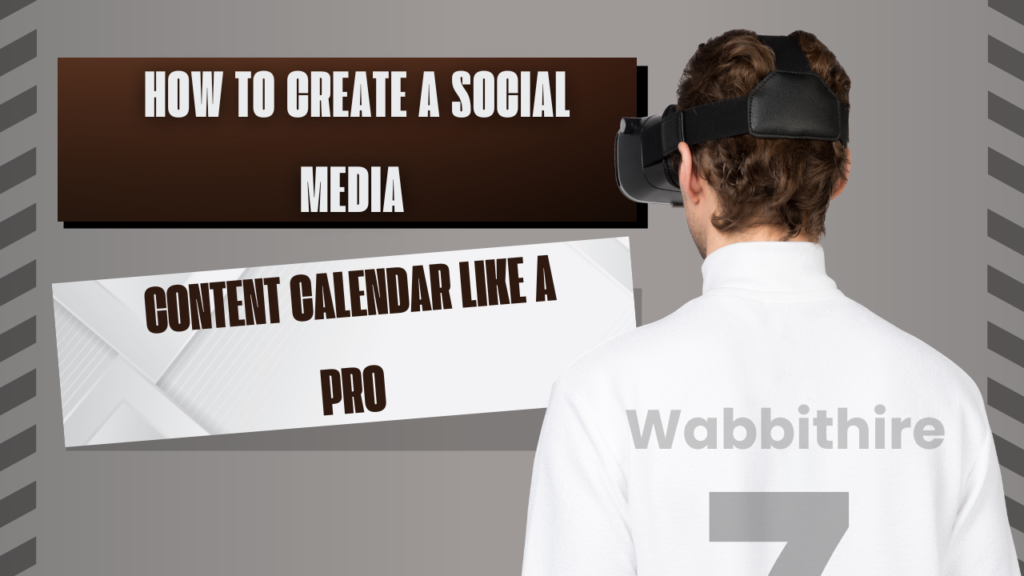A strategic blueprint is always needed to keep any work to make the process more efficient and easy. Prior planning helps organizations to make better plans and ideas. A social media content calendar is a kind of tool that makes planning more effective using digital manners. It also makes the road map toward growth very clear. It makes employees more focused on attaining positive development in a shorter period. This article discusses the steps to create a professional calendar that saves time, keeps content on track, and yields better results.
Step-By-Step Guide To Create a Social Media Content Calendar
A social media content calendar is a tool to plan, categorize, and publish your social media posts. It helps you find out content, posting time, and publication platforms. It also includes tags, links, @-mentions, images, and video. Below are the steps needed to create it.
1. Examine Your Previous Content Records
Analyze your content’s complete analytics to know your highest and low-performing posts. Also, figure out competitors’ content to notice where you are lagging. Track and analysis records may give you details about what content you should create to attract your audience. This will create an extra follow-up to your brand. Identification of these records helps improve your brand’s goals. Consider the following during your record analysis:
- Important keywords for each platform
- Your target audience
- Your target on each platform
- Highest and low-performing post views
- Posting time and changes need to be taken
- Trying out new ideas and experimental things
2. Use a Template
Create a social media content calendar template to classify workflows, and improve track analytics. The template should include the following:
- Platforms of various Social media accounts
- Date and time of publication
- Post topic and type of content
- Hashtags and links
- Media (GIFs, images, video, etc.)
- Status notes (published, scheduled, in progress, planned, etc.)
- Feedback notes
- Key performance indicators (KPIs)
3. Categorize Your Social Media Platforms and Content Types
Try to find out on which platform your audience engages most. And what types of content are they interested in? Based on your key track metrics, identify the basic content categories to add to your library. This enhances your social media post ideas.
You will get collective keywords, hashtags, and key topics after completing your research. This will improve your audience engagement across platforms. Planning your content post using this information may expand your reach and produce relevant content. Engaging with your audience over selling can enhance interest in your brand. So, try to post promotional content as little as possible. Each social media content serves a different objective. Here are the 6 main types of social media content:
- Text-based posts
- Short-form videos
- Long-form videos
- Live streaming
- Text-based posts
- Images, memes and GIFs
4. Figuring Out the Posting Schedule
After getting post content ideas, posting schedules help to keep track of the best possible times for publishing. Frequent content posting is important, but do not prefer quantity over quality. Avoid unnecessary content posting or producing more content on the same topic. Depending upon your channel analysis, figure out the best possible publishing time across platforms. This information will help you to focus and attain the most visibility.
Also read: How to find your niche as a beginner content writer
5. Tracking and Analyzing Your Social Media Content Calendar
Analyze the information on your social media records and optimize your social media calendar. You can save your well-performed content and reintroduce it again after some time. Analyze the new trends and generate posts that are evolving in social media to attract followers. If one post performs well on one network don’t mean that it performs well on other networks. Each platform needs a separate strategy to increase the reach of the given post.
6. Improvise Your Social Media Content Calendar
You can improvise your content calendar by seeking feedback from other teams. It will give you fresh ideas and strategies to strengthen your content. It also paves the way for work with different teams to reach organizational goals together. The product team delivers the details of new features, services, or products needed. The human resources team can let you know important dates and deliverables. The involvement of various teams gives an easy, and reliable way to access the right tools and deliverables.
Conclusion
If you fail to plan, you plan to fail. The famous saying explains the necessity and importance of planning. Social media content calendar will help you stay planned, scheduled, organized, and focused on your content. Bloggers, publishers, and businesses use it to control their content across different platforms, e.g., magazines, blogs, and social media outlets. By implementing it, you can take your social media to the next level and attract more engagement and traffic to your brand. Likewise, it will track trends, and deadlines to avoid last-minute rushes and missed opportunities. Stay updated!
Follow Wabbithire for more!




